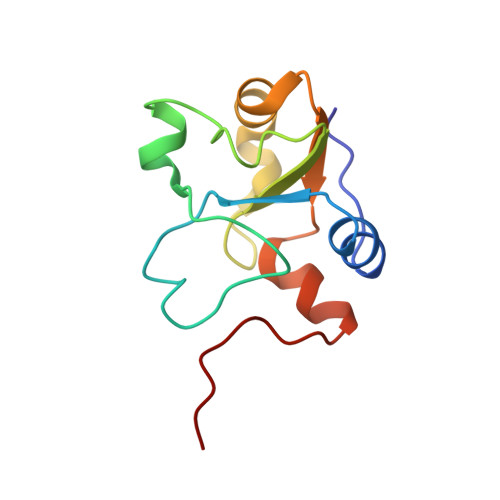S-Nitrosylation Induces Structural and Dynamical Changes in a Rhodanese Family Protein.
Eichmann, C., Tzitzilonis, C., Nakamura, T., Kwiatkowski, W., Maslennikov, I., Choe, S., Lipton, S.A., Riek, R.(2016) J Mol Biology 428: 3737-3751
- PubMed: 27473602
- DOI: https://doi.org/10.1016/j.jmb.2016.07.010
- Primary Citation of Related Structures:
5HBL, 5HBO, 5HBP, 5HBQ, 5LAM, 5LAO - PubMed Abstract:
S-Nitrosylation is well established as an important post-translational regulator in protein function and signaling. However, relatively little is known about its structural and dynamical consequences. We have investigated the effects of S-nitrosylation on the rhodanese domain of the Escherichia coli integral membrane protein YgaP by NMR, X-ray crystallography, and mass spectrometry. The results show that the active cysteine in the rhodanese domain of YgaP is subjected to two competing modifications: S-nitrosylation and S-sulfhydration, which are naturally occurring in vivo. It has been observed that in addition to inhibition of the sulfur transfer activity, S-nitrosylation of the active site residue Cys63 causes an increase in slow motion and a displacement of helix 5 due to a weakening of the interaction between the active site and the helix dipole. These findings provide an example of how nitrosative stress can exert action at the atomic level.
- Laboratory of Physical Chemistry, Swiss Federal Institute of Technology, ETH-Hönggerberg, CH-8093 Zürich, Switzerland.
Organizational Affiliation:
















